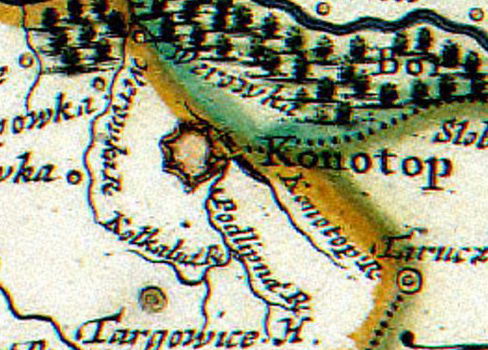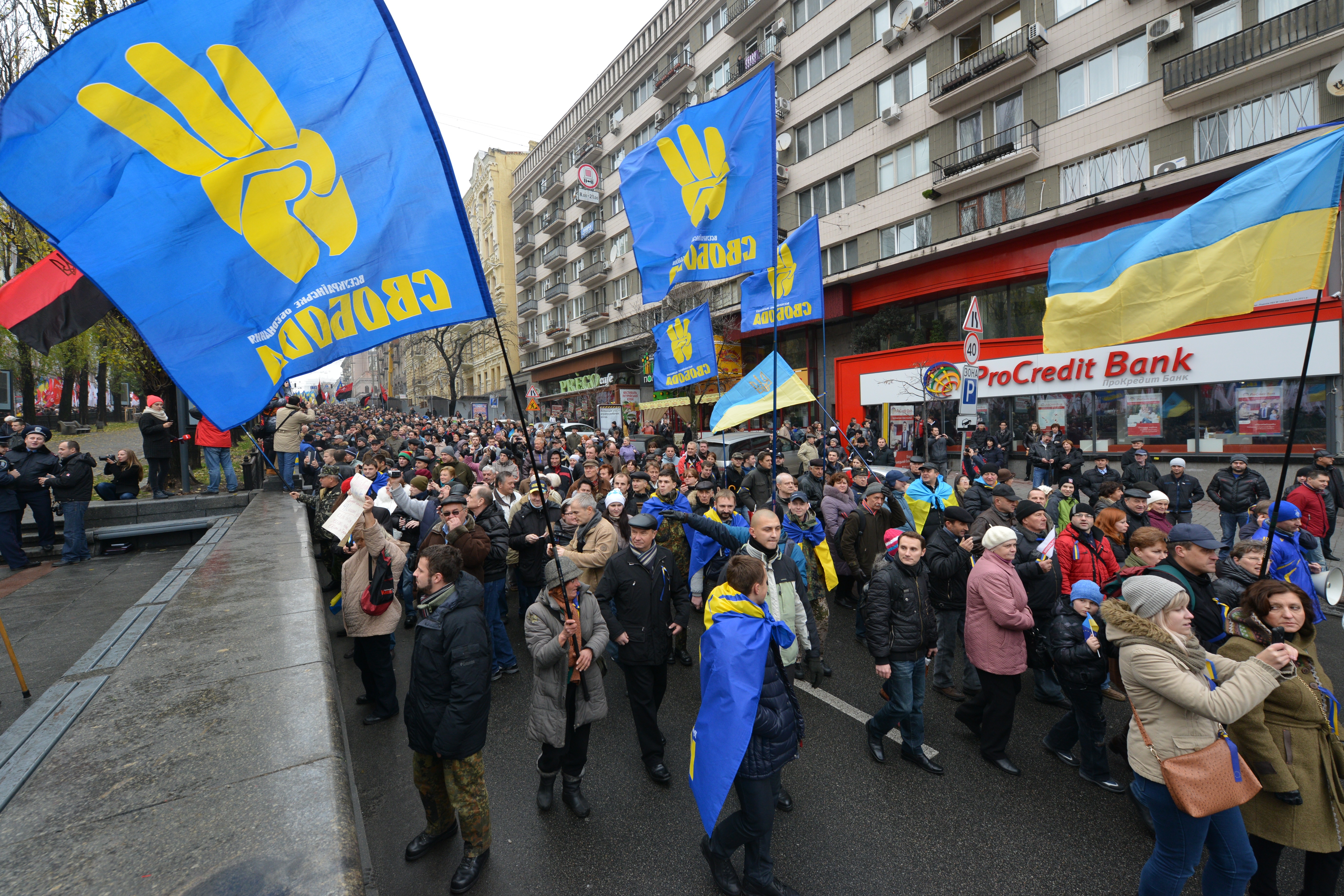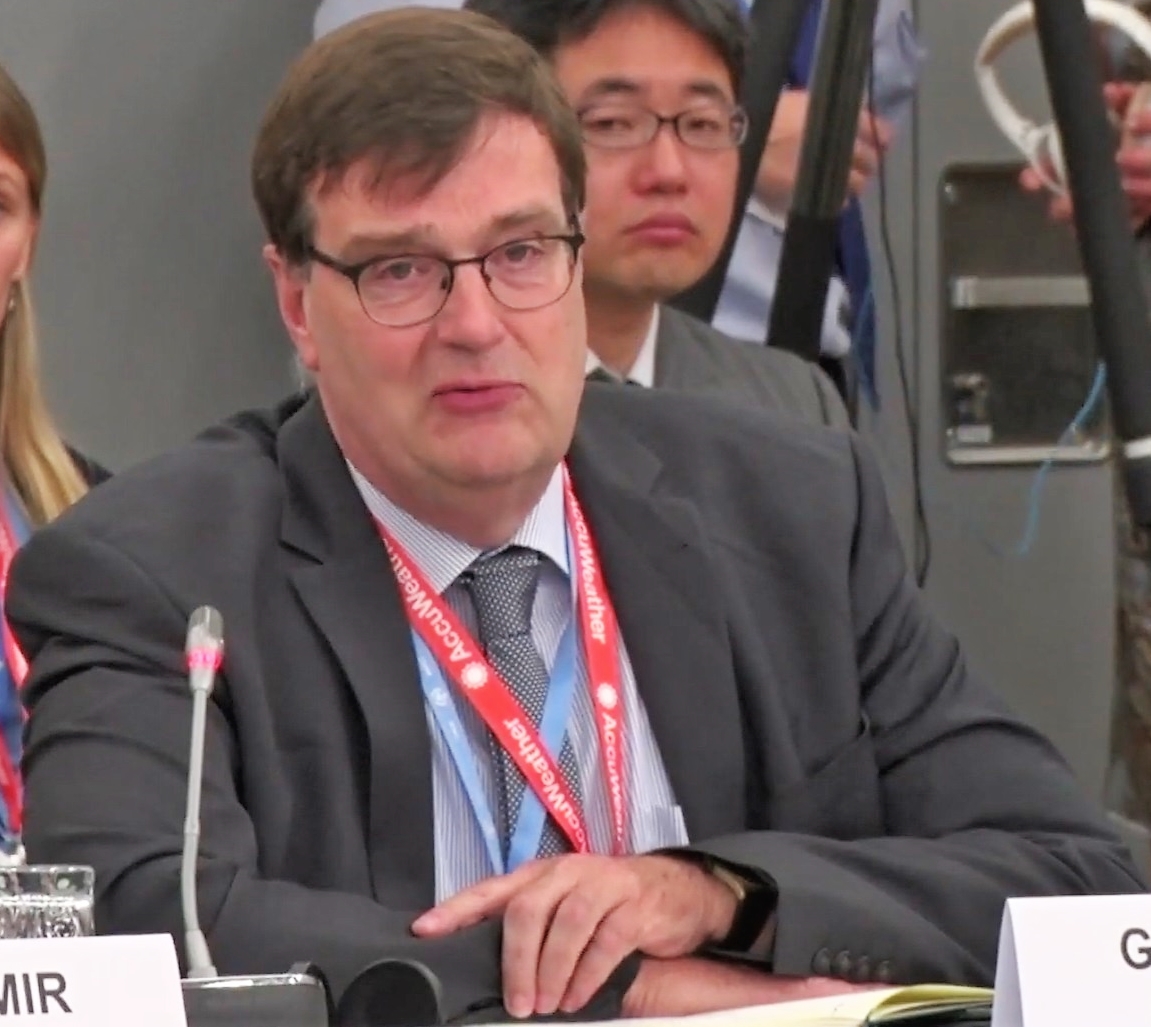|
Konotop
Konotop ( ) is a city in Sumy Oblast, northeastern Ukraine. Konotop serves as the administrative center of Konotop Raion within the oblast. Konotop is located about from Sumy, the administrative center of the oblast. It is host to Konotop Air Base. The population is Name The word ''konotop'' denotes a place where horses drowned, that is, any swampy, impassable place. The word itself comes from "horses stomp", which was transformed into a noun with the help of the word-forming method of baseline. Konotop is a common Slavic toponym; settlements with this name exist not only in Ukraine, but also in Poland, Belarus and Russia. In several dialects of Ukrainian, the ''konotop'' () also refers to the herbaceous plant, common knotweed. Some historians believe that Konotop as a settlement existed even before the Mongol-Tatar invasion. According to legend, during the passage of the Tatar cavalry in the area, many horses and riders died in impassable swamps, leading to the area bein ... [...More Info...] [...Related Items...] OR: [Wikipedia] [Google] [Baidu] |
Konotop Raion
Konotop Raion (, ) is a raion in Sumy Oblast in Central Ukraine. The administrative center of the raion is the town of Konotop. Population: On 18 July 2020, as part of the administrative reform of Ukraine, the number of raions of Sumy Oblast was reduced to five, and the area of Konotop Raion was significantly expanded. The January 2020 estimate of the raion population was Geography and climate The area of the district is 5186.5 km2. Konotop District is located on a flat area. The highest point of the district is 226 m, located on the slopes of the Central Russian Plain, which is located in the east of the district. Національний атлас України, с. 42 Retrieved 2025-06-27The relief of the district is mostly lowland, covered with coniferous and broad-leaved forests and meadow steppes. Meadows grow in the floodplains of rivers. Konotop District has reserves of silt, sapropel, peat, quartzite. The climate is moderately continental. Winter is coo ... [...More Info...] [...Related Items...] OR: [Wikipedia] [Google] [Baidu] |
Sumy Oblast
Sumy Oblast (), also known as Sumshchyna (), is an oblast (province) in northeast Ukraine. The oblast was created in its modern-day form, from the merging of raions from Kharkiv Oblast, Chernihiv Oblast, and Poltava Oblast in 1939 by the Presidium of the Supreme Soviet of the Soviet Union. The estimated population is The administrative center of the oblast is the city of Sumy. Other important cities within the oblast include Konotop, Okhtyrka, Romny, and Shostka. The modern region combines territories of the historical Severia (northern part) and Sloboda Ukraine (southern part). On territory of the Sumy Oblast important centers of Ukrainian culture are located, such as the city of Hlukhiv which served as a hetman residence during the Cossack Hetmanate as well as the cities of Okhtyrka and Sumy which were regional centers of the Sloboda Ukraine. The oblast has a heavy mix of agriculture and industry, with over 600 industrial locations. Among the most notable was the So ... [...More Info...] [...Related Items...] OR: [Wikipedia] [Google] [Baidu] |
Konotop Air Base
Konotop is an air base in Ukraine located 4 km west of Konotop. It is a training base. During the end of the Cold War years, it was home to 105 UAP (105th Aviation Training Regiment) flying 101 Aero L-39 training jets. Many helicopters and jet trainers are parked on a grassy area, and appear unused. The base became a part of the territory taken in the 2022 Russian invasion of Ukraine. It is uncertain whether the base is in use, being approximately 25 km from the frontline. See also * Brody Air Base * Hostomel Airport Antonov Airport ( ), also known as Hostomel (or Gostomel) Airport (), is an international cargo airport and testing facility in Ukraine, located near Hostomel, which is a northwestern suburb of Kyiv. The airport is owned by and named after the ... References RussianAirFields.com Soviet military air bases in the Ukrainian Soviet Socialist Republic Former military air bases in Ukraine {{Sumy-geo-stub ... [...More Info...] [...Related Items...] OR: [Wikipedia] [Google] [Baidu] |
List Of Cities In Ukraine
There are 463 populated places in Ukraine, populated places in Ukraine that have been officially granted city status () by the Verkhovna Rada, the country's parliament, as of 23 April 2025. Settlements with more than 10,000 people are eligible for city status although the status is typically also granted to settlements of historical or regional importance. Smaller settlements are Populated places in Ukraine#Rural settlements, rural settlements () and villages (). Historically, there were systems of city rights, granted by the territorial lords, which defined the status of a place as a ''misto'' or ''selo''. In the past, cities were self-governing and had several privileges. The list of cities is roughly ordered by population and the 2022 estimates are compared to the 2001 Ukrainian census, except for Chernobyl for which the population is an unofficial estimate. The City with special status, cities with special status are shown in ''italic''. The average population size is 62,000. ... [...More Info...] [...Related Items...] OR: [Wikipedia] [Google] [Baidu] |
Cossacks
The Cossacks are a predominantly East Slavic languages, East Slavic Eastern Christian people originating in the Pontic–Caspian steppe of eastern Ukraine and southern Russia. Cossacks played an important role in defending the southern borders of Ukraine and Russia, Cossack raids, countering the Crimean-Nogai slave raids in Eastern Europe, Crimean-Nogai raids, alongside economically developing steppes, steppe regions north of the Black Sea and around the Azov Sea. Historically, they were a semi-nomadic and semi-militarized people, who, while under the nominal suzerainty of various Eastern European states at the time, were allowed a great degree of self-governance in exchange for military service. Although numerous linguistic and religious groups came together to form the Cossacks, most of them coalesced and became East Slavic languages, East Slavic–speaking Eastern Orthodox Church, Orthodox Christians. The rulers of the Polish–Lithuanian Commonwealth and Russian Empire en ... [...More Info...] [...Related Items...] OR: [Wikipedia] [Google] [Baidu] |
Raions Of Ukraine
A raion (; ), often translated as district, is the second-level Administrative divisions of Ukraine, administrative division in Ukraine. Raions were created in a 1922 administrative reform of the Soviet Union, to which Ukraine, as the Ukrainian Soviet Socialist Republic, belonged. On 17 July 2020, the Verkhovna Rada (Ukraine's parliament) approved an administrative reform to merge most of the 490 raions, along with the "City of regional significance (Ukraine), cities of regional significance", which were previously outside the raions, into just 136 reformed raions. Most tasks of the raions (education, healthcare, sport facilities, culture, and social welfare) were taken over by new hromadas, the subdivisions of raions.Where did 354 ... [...More Info...] [...Related Items...] OR: [Wikipedia] [Google] [Baidu] |
Svoboda (political Party)
The All-Ukrainian Union "Freedom" (), commonly known as V.O. Svoboda or simply Svoboda, political party in Ukraine. It has been led by Oleh Tyahnybok since 2004. Its predecessor, the Social-National Party of Ukraine (SNPU) formed and officially registered as a political party in October 1995. The SNPU was characterized as a radical right-wing populist party that combined elements of ethnic ultranationalism and anti-communism. During the 1990s, it was accused of neo-Nazism due to the party's recruitment of skinheads and usage of neo-Nazi symbols.Andrusechko, P. Road of Tyahnybok towards Freedom'. "Ukrayinsky zhurnal". Poznan, May 2009 Tyahnybok was elected in 2004 as the president of the party and shortly after he made efforts to moderate the party's image by changing the party's name and symbols and expelling neo-Nazi and neofascist groups. Although Tyahnybok expelled neofascist groups, Svoboda never abandoned ethnic ultranationalist views and he reaffirmed the party's c ... [...More Info...] [...Related Items...] OR: [Wikipedia] [Google] [Baidu] |
World Meteorological Organization
The World Meteorological Organization (WMO) is a List of specialized agencies of the United Nations, specialized agency of the United Nations responsible for promoting international cooperation on atmospheric science, climatology, hydrology and geophysics. The WMO originated from the International Meteorological Organization (IMO), a nongovernmental organization founded in 1873 as a forum for exchanging weather data and research. Proposals to reform the status and structure of the IMO culminated in the World Meteorological Convention of 1947, which formally established the World Meteorological Organization. The Convention entered into force on 23 March 1950, and the following year the WMO began operations as an intergovernmental organization within the UN system. The WMO is made up of 193 countries and territories, and facilitates the "free and unrestricted" exchange of data, information, and research between the respective meteorological and hydrological institutions of its m ... [...More Info...] [...Related Items...] OR: [Wikipedia] [Google] [Baidu] |
Tsardom Of Muscovy
The Tsardom of Russia, also known as the Tsardom of Moscow, was the centralized Russian state from the assumption of the title of tsar by Ivan IV in 1547 until the foundation of the Russian Empire by Peter the Great in 1721. From 1550 to 1700, Russia grew by an average of per year. The period includes the upheavals of the transition from the Rurik to the Romanov dynasties, wars with the Polish–Lithuanian Commonwealth, Sweden, and the Ottoman Empire, and the Russian conquest of Siberia, to the reign of Peter the Great, who took power in 1689 and transformed the tsardom into an empire. During the Great Northern War, he implemented substantial reforms and proclaimed the Russian Empire after victory over Sweden in 1721. Name While the oldest endonyms of the Grand Principality of Moscow used in its documents were "Rus'" () and the "Russian land" (), a new form of its name in Russian became common by the 15th century. The vernacular ''Rus'' was transformed into ''Rus(s)iya'' ... [...More Info...] [...Related Items...] OR: [Wikipedia] [Google] [Baidu] |
Polish–Lithuanian Commonwealth
The Polish–Lithuanian Commonwealth, also referred to as Poland–Lithuania or the First Polish Republic (), was a federation, federative real union between the Crown of the Kingdom of Poland, Kingdom of Poland and the Grand Duchy of Lithuania, existing from 1569 to 1795. This state was among the largest, most populated countries of 16th- to 18th-century Europe. At its peak in the early 17th century, the Commonwealth spanned approximately and supported a multi-ethnic population of around 12 million as of 1618. The official languages of the Commonwealth were Polish language, Polish and Latin Language, Latin, with Catholic Church, Catholicism as the state religion. The Union of Lublin established the Commonwealth as a single entity on 1 July 1569. The two nations had previously been in a personal union since the Union of Krewo, Krewo Agreement of 1385 (Polish–Lithuanian union) and the subsequent marriage of Queen Jadwiga of Poland to Grand Duke Jogaila of Lithuania, who was cr ... [...More Info...] [...Related Items...] OR: [Wikipedia] [Google] [Baidu] |




